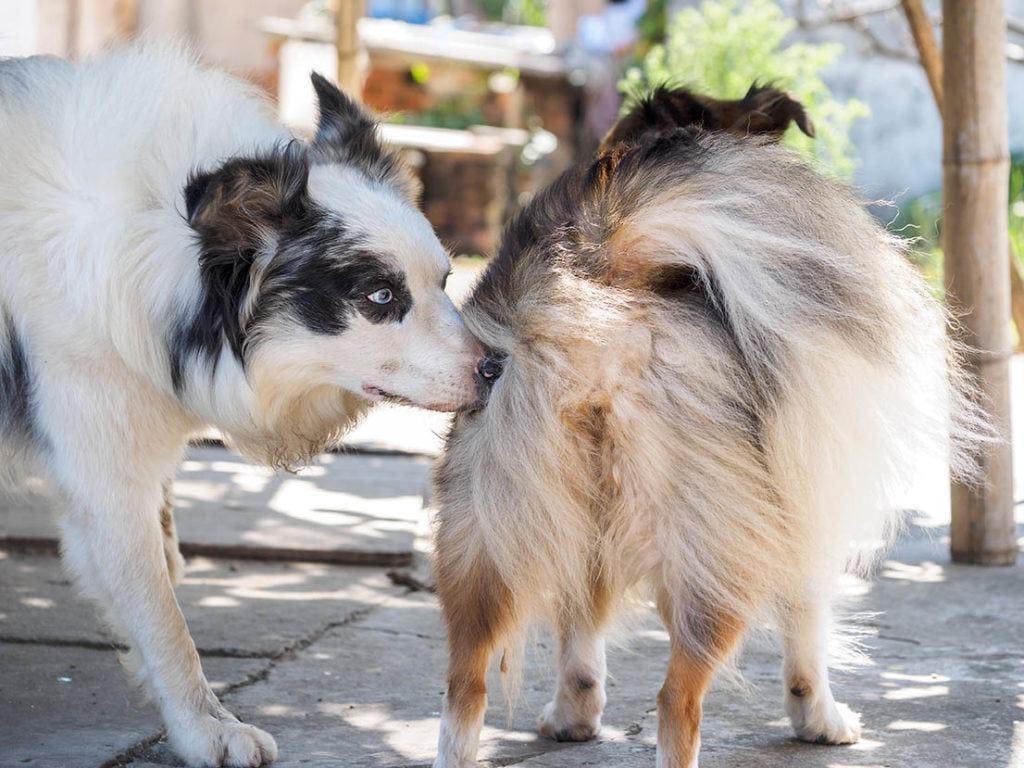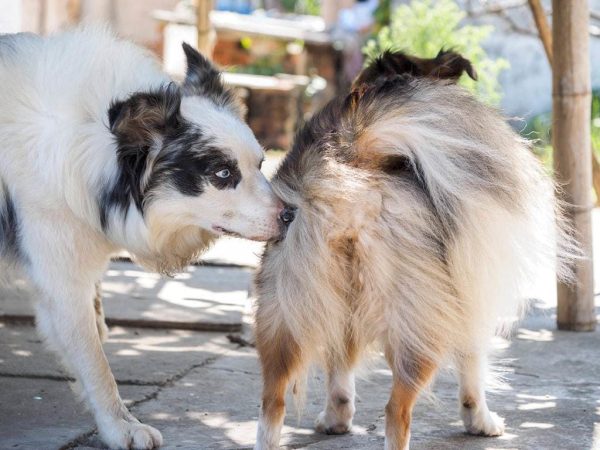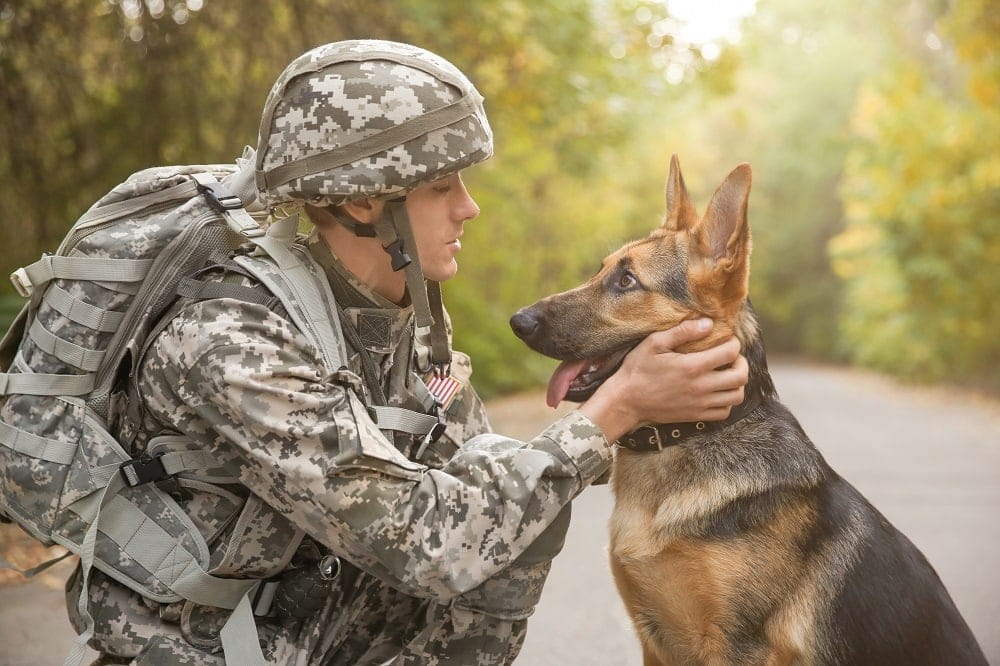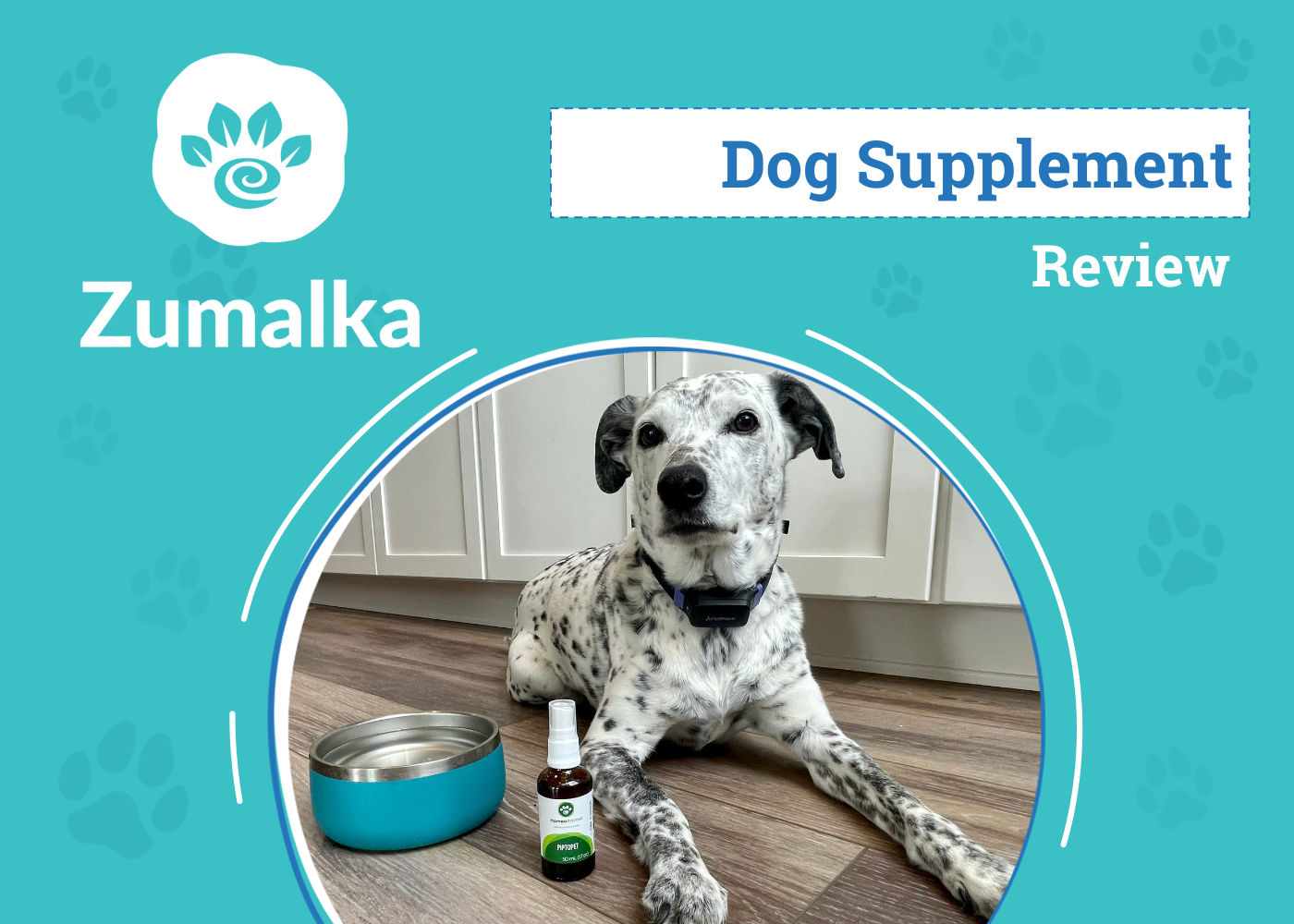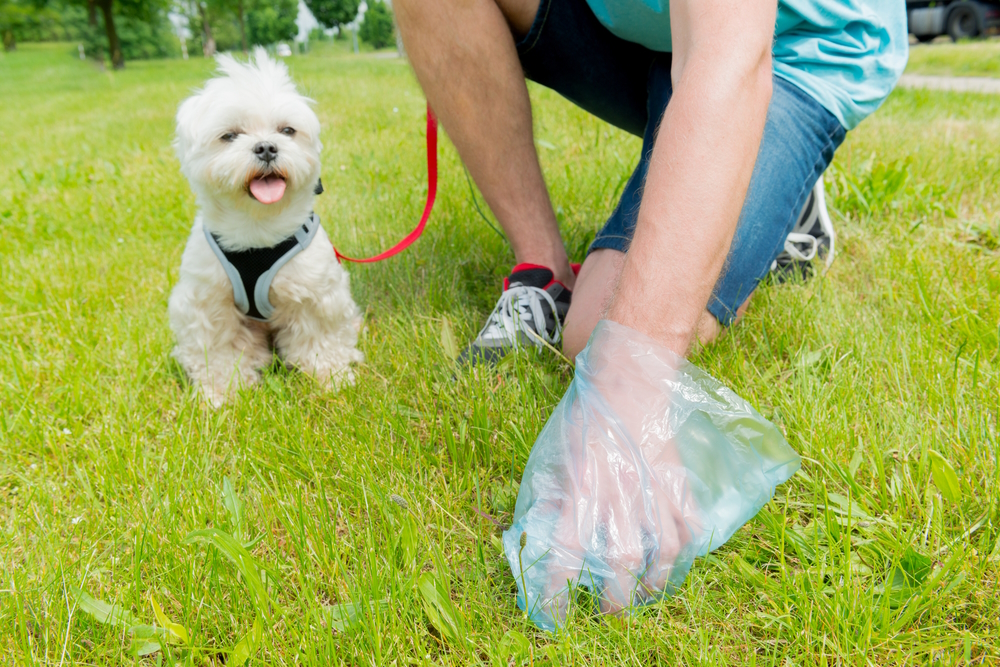Choosing to breed your dog is a big decision. It can have health consequences for your pup, whether or not it was planned. Epidemiological data show a prevalence of 64% of canines being spayed or neutered, with females and mixed breeds more likely to undergo the surgery. Many pet owners get it done when their dogs are between 4 and 6 months old. Many chose it for behavioral reasons and population control.
However, research has shown that surgery isn’t necessarily the cut-and-dry solution to these problems and timing of the procedure is also important. If you elect to keep your pup intact, it’s imperative to know the signs of a dog ready to mate.
The 9 Signs a Dog Is Ready to Mate
1. Sexual Maturity
The first and most significant hurdle is your dog’s age. They must reach sexual maturity before they can mate and have puppies. The timing varies with the breed. Generally, smaller dogs reach this benchmark around 6 to 9 months and larger pets usually around 1 to 2 years. Some pets may not show obvious signs for their first estrus or heat cycle. Other clues can help you determine when the time is near. It is usually advised not to breed your female dog until at least their second heat cycle to allow them to mature. Speak to your vet for advice on the best timing of a planned mating.
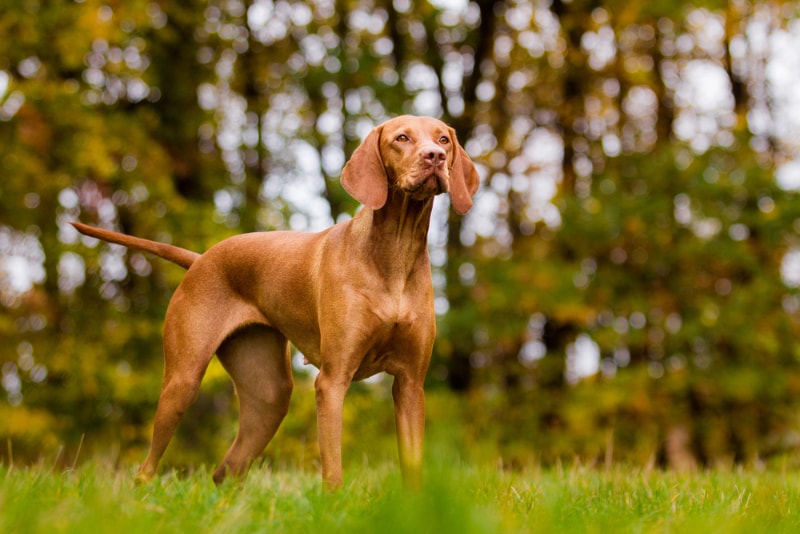
2. Timing
Usually, females come into heat every 6 months, although it can vary with the dog. Suffice it to say that it can range from 80 to 240 days between cycles. There are four phases, with the female receptive to the male only during the second or estrus stage. The obvious signs begin in the proestrus phase, which lasts roughly 5 to 10 days. A pup may be aggressive toward males until she enters estrus. On the other hand, a male will become sexually mature between 6 and 9 months of age. However, because they are ready to mate year-round, we will focus mostly on the female signs throughout the rest of the article.
3. Clinginess and Other Behavioral Changes
You’ll likely notice changes in your female pet’s behavior as she enters the heat cycle. She may become uncharacteristically clingy and follow you from room to room. Some dogs are quite needy during this time. There’s also the aforementioned aggression, which may also be a stark departure for your pup. This is common in both males and females. Remember that your pet’s behavior is hormone-driven and is nothing against you if they act out.

4. Swollen Vulva
Another noticeable sign during proestrus is a swollen vulva. It’s evident internally with changes occurring within the animal’s reproductive organs. Intact male dogs may take an interest in your dog when she’s in this stage, although she will not be receptive. Instinctively, the female knows she can’t get pregnant until she ovulates.
5. Excessive Licking
The swollen vulva will likely irritate your pet, causing her to lick at her genital excessively. The bloody discharge from her body will also trigger this behavior. The female is still in proestrus. The amount of bleeding varies with the dog. Some pet owners get special diapers to put on their pups to control the mess.
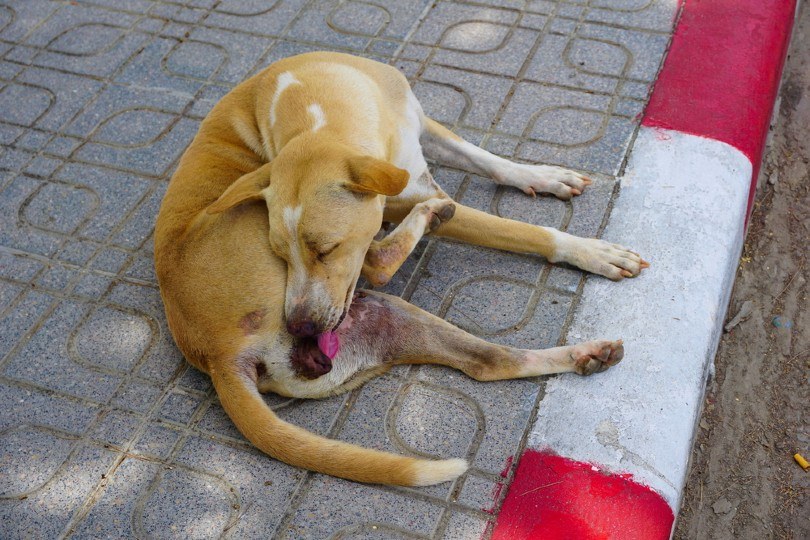
6. Slowing of the Bloody Discharge
As the female moves into the next phase, the discharge will slow and fade until it eventually stops. Estrus lasts 5 to 15 days. The female is receptive to males at this time and can get pregnant.
7. Frequent Urination
Your pet may urinate more frequently than usual. For males, it is because they are likely marking their territory to lay claim to a female. He may also try to escape your yard. For females, the pressure from their swollen vulva may play a role. However, she will also mark her space to let the males know she is ready to mate. You may see her holding her tail awkwardly and holding it to the side as another sign of her status.
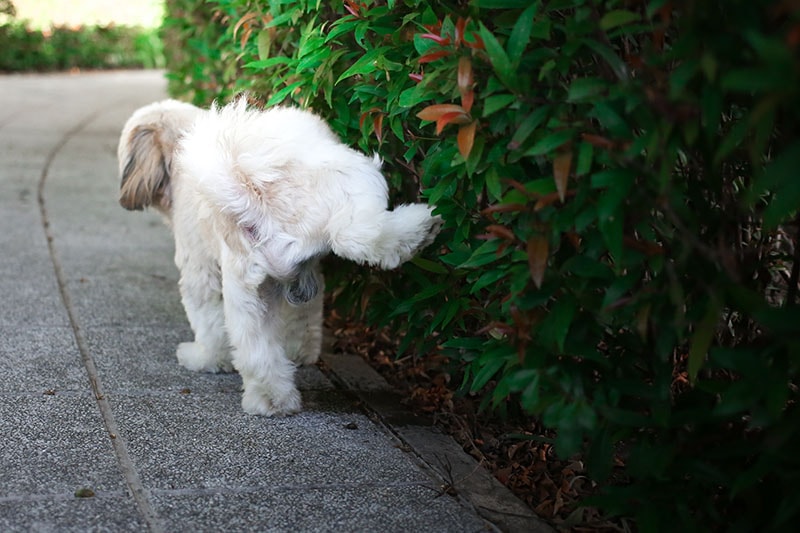
8. Progesterone Testing Results
A more direct approach to knowing precisely when your pup is ready to mate is progesterone testing. These levels will rise as the female approaches estrus from a low of less than 2 ng/ml to 5 ng/ml when ovulation is imminent. Your vet may also conduct vaginal cytology to find increased cornification of the epithelial cells as another indicator.
9. Receptiveness
Behavior is perhaps the most apparent sign. The female will be receptive toward males and even become aggressive or agitated around those of her sex. Meanwhile, males will become more aggressive and territorial. Roaming is also extremely common in both sexes.
It’s worth mentioning there is a relatively short window after ovulation when a pregnancy will be successful. Canine gestation is roughly 63 days. Then, the real fun begins.
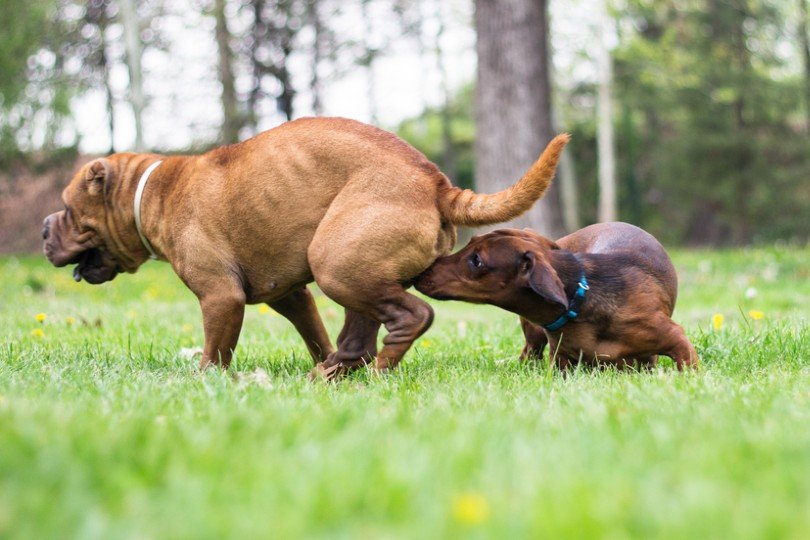
Responsible Pet Ownership
We’d be remiss if we didn’t stress responsible pet ownership when it comes to breeding your dog. We strongly urge you to consider your decision carefully before you proceed. Your vet can recommend pre-breeding screening for health conditions for which your pet’s breed is susceptible. The Orthopedic Foundation for Animals (OFA) can also provide specific information for your dog.
Pregnancy has significant health impacts on females. You should ensure your pet is able to handle the demands. We suggest working with your vet throughout the process to safeguard your dog’s health. Finally, remember that it’s not imperative to breed your dog even if you haven’t fixed them. Consider the consequences of keeping a litter of puppies for 8 weeks before finding them homes.
Final Thoughts
Knowing when to breed your dog isn’t difficult. Your pup’s behavior and physical changes will make it evident. Testing will ensure the timing is right for success. Deciding whether to mate your pooch or not is a part of responsible pet ownership. We suggest discussing your options with your vet or an experienced breeder to make an informed choice.
Related Reads:
Featured Image Credit: atiger, Shutterstock

